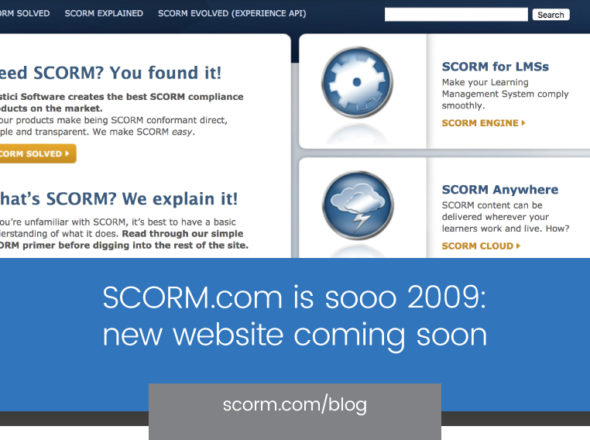Curious about the adoption of SCORM 2004, I recently conducted an informal study of the packages uploaded to SCORM Test Track. Here’s what I looked at and what I concluded.
SCORM Versions

I first looked at the distribution of SCORM versions over time. The data in the chart above represents the percentage of courses adhering to a given version imported during each of the last 18 months. As you can see from the pie chart, there is about a 50/50 split of between the number of SCORM 1.2 courses and SCORM 2004 courses. This split has remained fairly consistent overtime. Empirically we know that the SCORM Test Track is primarily used by advanced SCORM users and mostly as a tool for testing sequencing. This suggests that the actual usage of SCORM 2004 is probably lower than 50% in the overall market.
SCORM Versions By User

To get a better feel for the actual adoption of SCORM 1.2 vs SCORM 2004, I took a different slant on the first set of data. It occurred to me that we have some power users of the SCORM Test Track that might slant the data one way or the other if they are use a particular version exclusively. The chart above shows the percentage of users that have uploaded at least one course of a given standard. This angle shows that 43% of users have uploaded SCORM 2004 content.
The conclusion I draw from this data is one which we could have guessed. SCORM 2004 is gaining significant adoption, but SCORM 1.2 is still the industry workhorse. That is not unexpected or even inherently bad. SCORM 1.2 gained favor as the de facto industry standard because it works. SCORM 2004 is better, but it will take a while for it to surpass the adoption of SCORM 1.2.
Users

SCORM Test Track just signed up its 3000th user. The number of people discovering SCORM Test Track has steadily grown since we launched the offering a year and a half ago. Finding 3000 users with virtually no promotion means that there are a lot of people out there using SCORM. And, at least 1290 (3000*43%) are using SCORM 2004.
Realizing the -ilities?
One of the big promises of SCORM 2004 is that it would take us closer to realizing some of the ADL “-ilities”. Particularly, it would enable content authors to break content down into smaller chunks which theoretically enables more reuse than the traditional SCORM 1.2 model of a single monolithic SCO.

It appears that we’re making progress. While there are still some single SCO SCORM 2004 courses, the trend has shifted. In SCORM 1.2 we saw 71% of courses uploaded as a single SCO. In SCORM 2004, we only see 35%. (And who was the guy who uploaded a 5000 SCO course? I really hope he was just trying to crash our server, if not, I really sympathize with his learners!…and I’m happy to report that the package imported successfully!)

SCORM 2004 also promised to increase adaptability, or “The ability to tailor instruction to individual and organizational needs”. A good indicator of whether content developers are using SCORM 2004 to increase adaptability can be found in their use of SCORM 2004 sequencing rules. The chart above indicates that about half of all SCORM 2004 courses use some form of deliberate sequencing strategy. This chart doesn’t take into account the fact that 35% of the uploaded SCORM 2004 courses contained only a single SCO. Since single-SCO courses don’t need any sequencing rules, we can ascertain that roughly 70% of all multi-SCO courses use some form of deliberate sequencing strategy.


